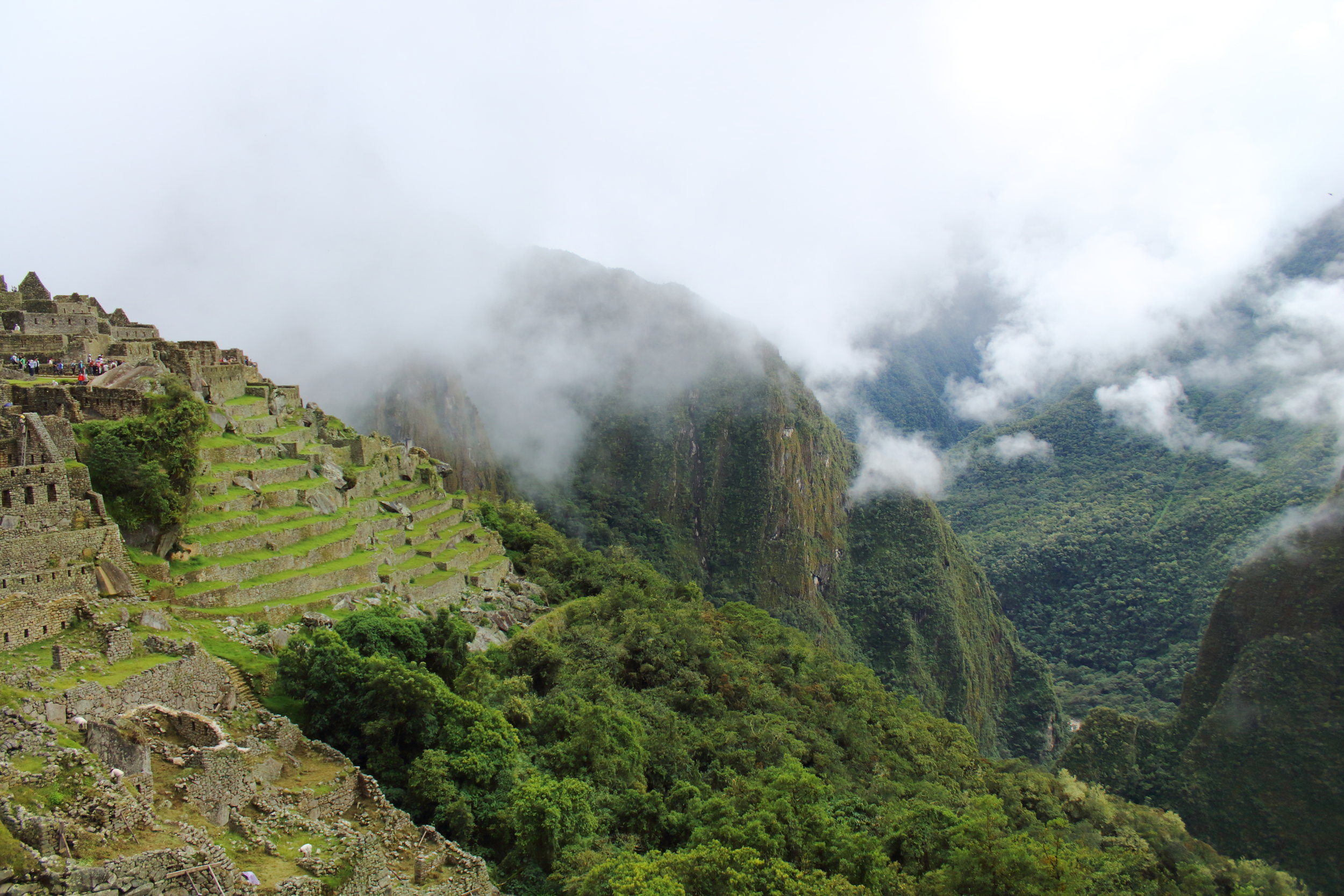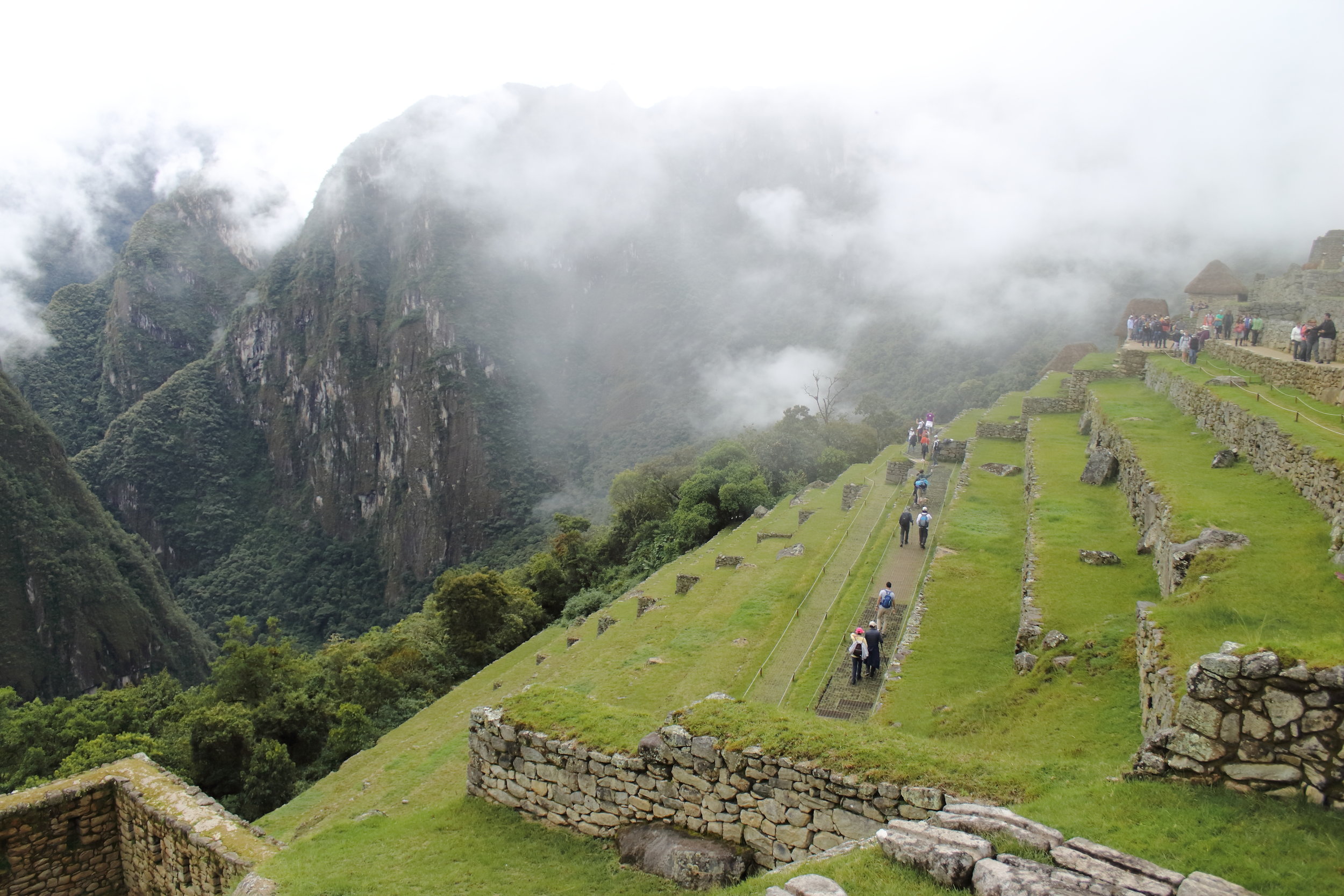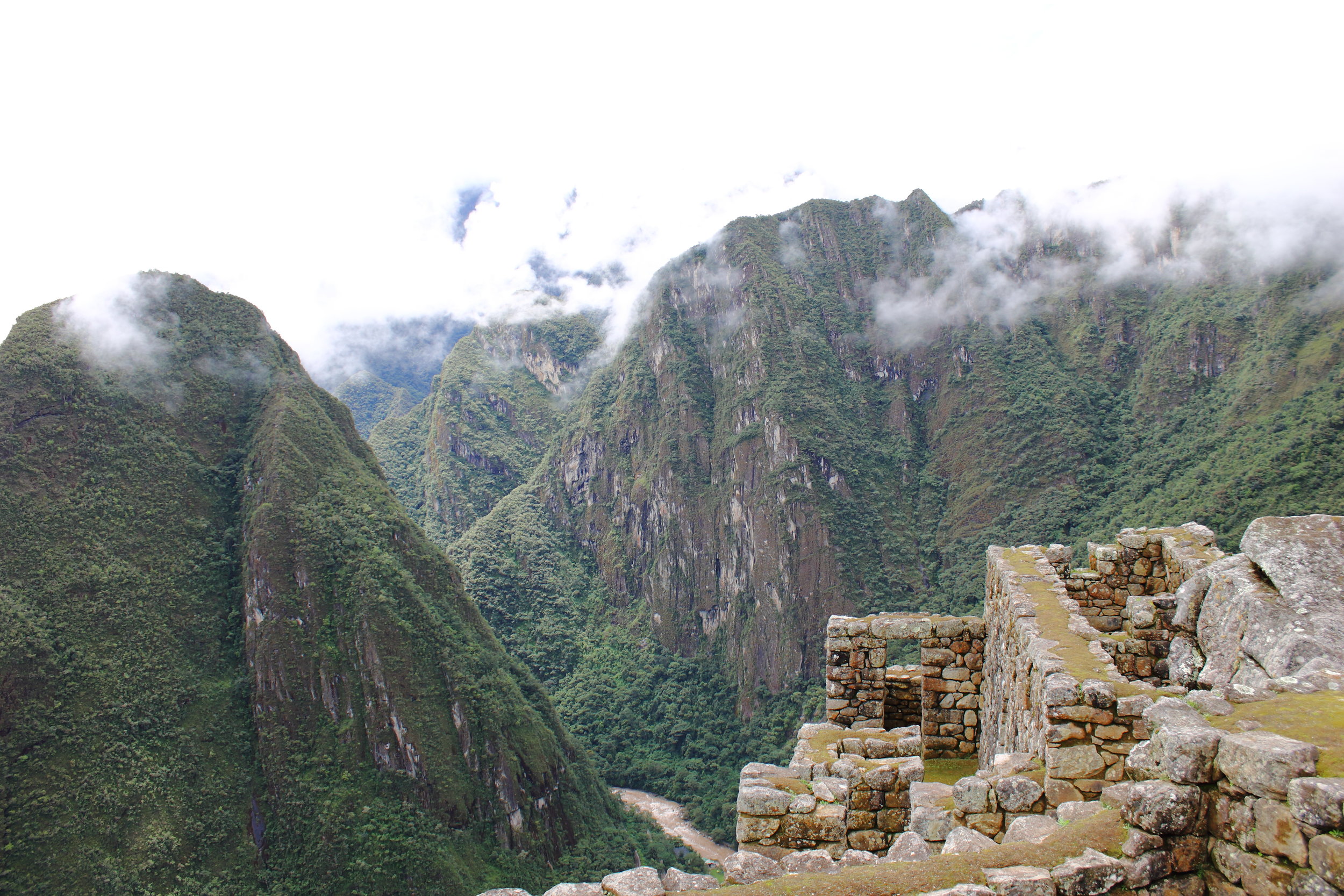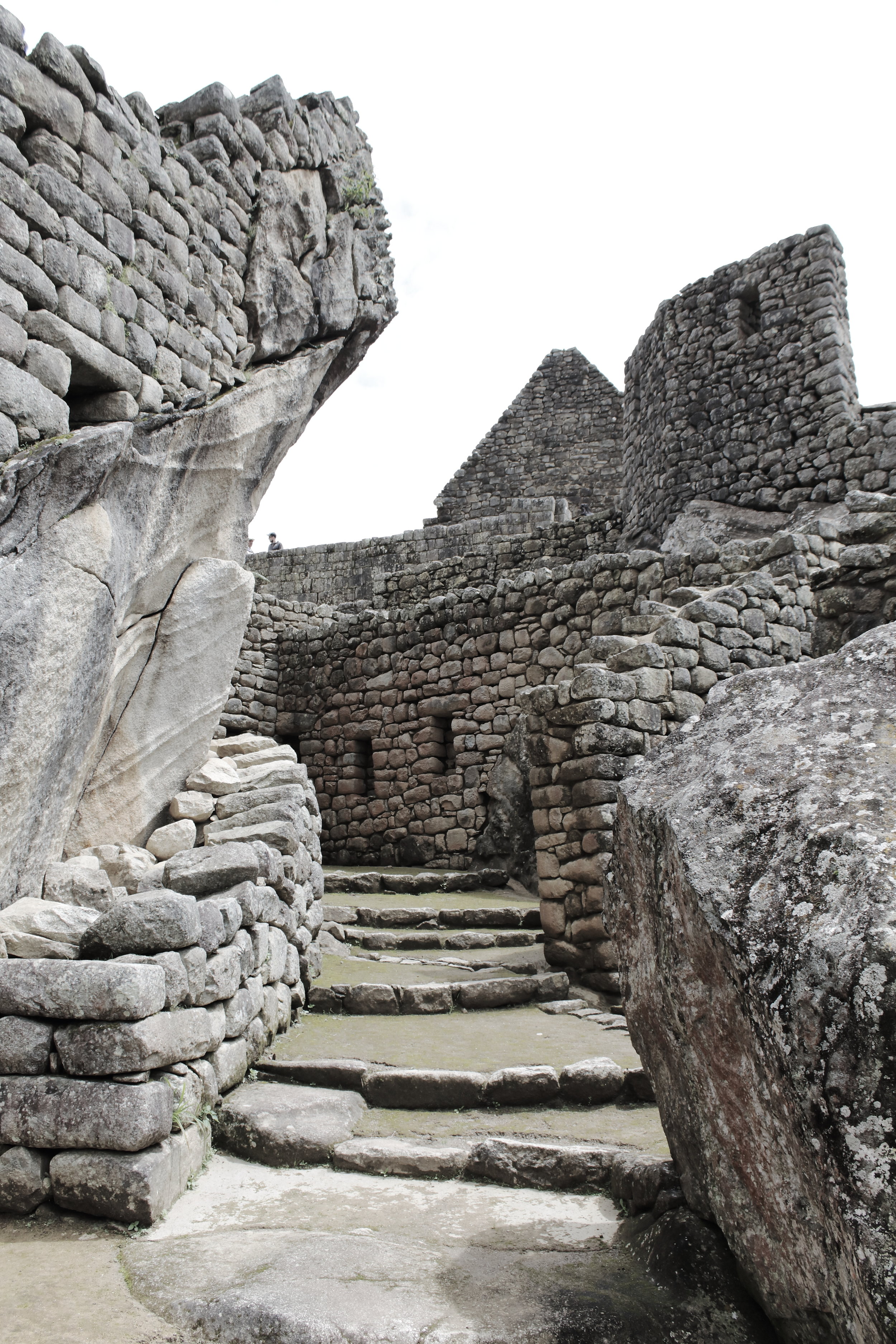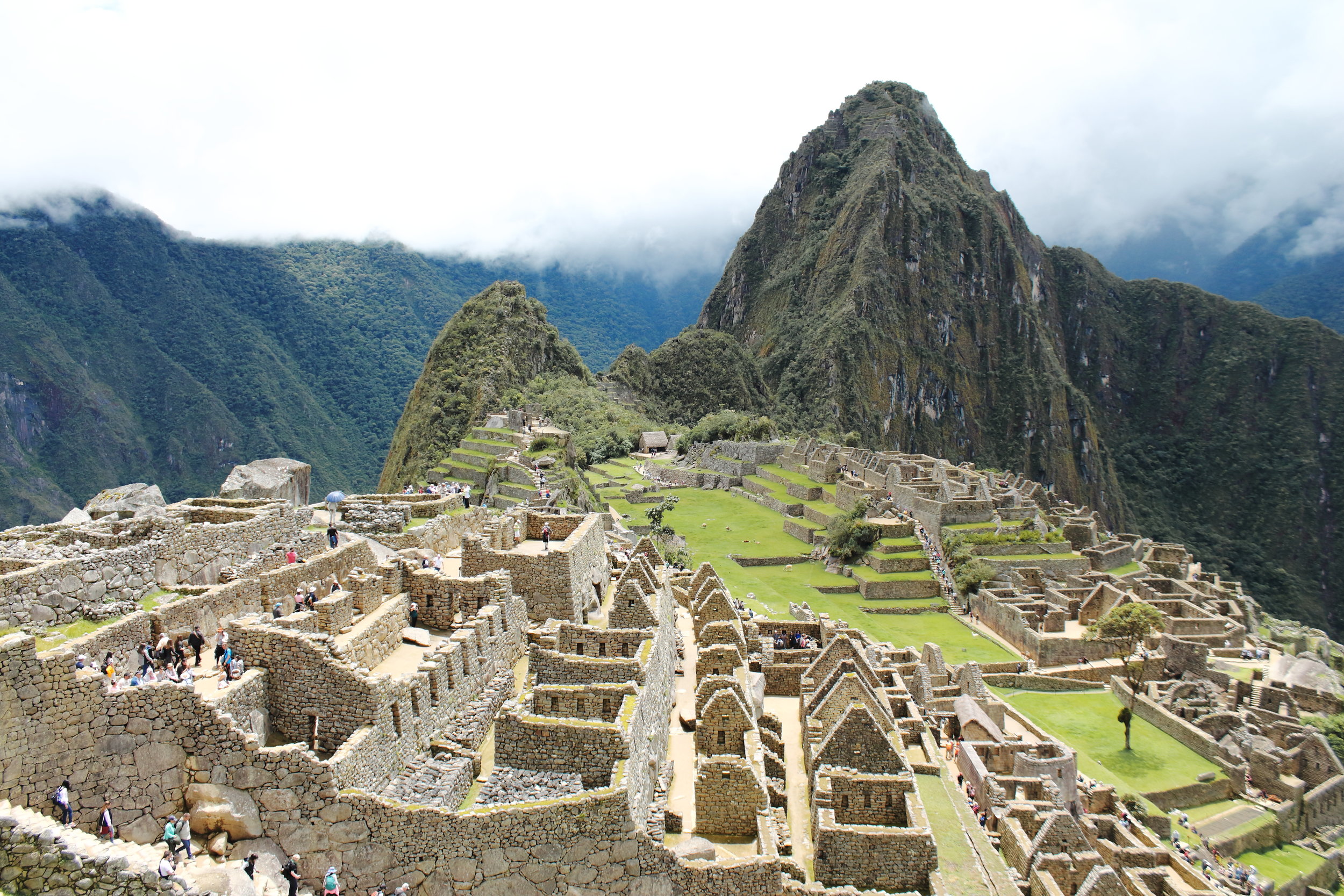Indulging on the Inca Trail
Itinerary: 4 or 5 days — 3 days hiking the Inca Trail, 1 day exploring the city, 1 bonus day hiking Machu Picchu Mountain
So much more than the postcard picture.
I had known of Machu Picchu for some time and seen countless cool photos, but it wasn’t until I heard a work colleague recount his trip on the Inca Trail that the citadel became a must-see for me. Maybe I just love any opportunity to hike, or maybe he was just a good story teller, but booking the Inca Trail was the first reservation I made after I bought my initial flight abroad.
And a good thing too — there is a limited number of trekkers and porters allowed on the Inca Trail each day, so if you’re looking for very specific dates, best to book months in advance, especially if you plan to go during the high season June through August. Heads up, the trail is closed for restoration in February.
Also, it’s not cheap. Only guided tours are allowed on the track, which means you’ll be paying a pretty penny for the trip, and you’ll need to save plenty of cash to tip the porters and guides at the end (see DETAILS, TIPS & TRICKS below). The plus side is that you don’t have to carry your own tent, food, or cooking collateral — just a sleeping bag (yours or rental available) and pad (should be provided for you).
I had the great fortune of having a friend from university accompany me on this amazing journey; sharing the experience with someone close made the trip even more stunning. We were picked up bright and early from our hostel in Cusco on the first day, and tried to snooze a little on the drive to Ollantayambo, where we stopped in a cafe for breakfast and last-minute items. It’s a small town where many travelers grab the train to Aguas Calientes, aka Machu Picchu Town. (Aguas Calientes is only accessible via the Inca Trail or rail, but the train is pretty pricey — you can save money via bus transfer to Ollantayambo rather than pay the full fare to/from Cusco.)
We continued our drive a short way further to Kilometer 82, which is the traditional starting point for the trek and check-in for the Inca Trail. Some folks choose to start at KM 77, closer to Ollantayambo, but I can’t say I felt like I was missing out as we drove by it. At KM 82, we strapped on our sleeping pads and watched in awe as all the porters loaded up their monstrous bags, making us feel both impressed and feeble in comparison.
As the porters lined up separately do go through their checkpoint, we made our way to the check-in and then crossed the Urubamba River, springing into the start of our 5-day excursion. The first day is a warm-up with little vertical gain and minimal mileage (~1,600 ft elevation rise across 6.46 miles). It’s a good opportunity to get used to the packs and other group members, with a lot of rest stops and easy breathing.
The trail passes by Qhanabamba, a house-like site across the river, before ascending to a ledge overlooking Llactapata, a beautiful complex tucked at the base of of a mountain with the river tracing its edge. Our guide pointed our that the city looks a bit like a foot with the distinct outline of toes. There’s a great view from the above Willkarakay, a small military outpost with a great vantage point and quaint courtyards. Following a nice lunch break with luscious Peruvian food, we continued onto Hatunchaca, our camp site for the night, complete with flush toilets and a hot shower for a little extra money. We lavished in another great meal — starting with tea and light snacks before the main courses came out — before passing out in our spacious tent and cozy sleeping bags.
The next day is the true test for anyone with elevation issues. Leaving Hatunchaca pretty early after a warm breakfast and coca tea (delivered to our tent!), we began at roughly 10,000 ft and climbed to Warmiwañusca, affectionately called Dead Woman’s Pass, which is the highest point of the trek, approximately 14,000 ft above sea level. This day is without archeological sites and all about the hiking and sweeping views of the Andes — and gaping at the porters hoofing it up the hill. This is also the first day where you’re walking on the original Inca Trail, an impressive networks of foot highways, tediously built with a seemingly infinite amount of stones that have been puzzle-pieced together rather miraculously. A major infrastructure feat, impressive by even today’s standards.
From the top, it’s a consistent downhill track with more steps to get to the Pacaymayo campsite, beautifully situated in the bottom of the gully of the two highest mountain passes. Apart from the well-trafficked squat toilets (read nasty), this campsite is quite stunning with streams streaking their way between the numbered lots. It overlooks a valley with overlapping layers of clouds. Not a bad way to spend the afternoon, kicking off the hiking boots and watching the sky change with the satisfaction of knowing that the hardest part is over.
As with the first day, we were fed generously, and quite possibly too much. I was pleased and impressed with the vegetarian food alternates. We did find that the abundance of food didn’t always sit well, especially being unaccustomed to some of the dishes. While it was delicious, I would caution people to not be too overeager, even with a strong appetite from a good day on the trail!
We woke the next morning after a chillier night’s rest with the second pass looming ahead of us. Conveniently, the Runkuraqay trading post is located roughly in the middle of the hike up, so we got a well-timed break to learn about the history of the site and catch our breath. After conquering the remaining distance to the top, it was more-or-less a day of downhill hiking, with intermittent flats and rises providing much-needed relief for tired knees. It was also a day of one awesome archeological site after another.
We came to Sayaqmarka, which is accessed by a steep stair ascent and is full of interesting nooks and rooms. Apparently used by spiritual leaders, the site is coyly named ‘inaccassible’ due to the entry staircase. From Sayaqmarka, you can look down on Qonchamarka, the site built for food storage for Sayaqmarka. Then a lunch break with cheeky llamas before moving along to Phuyupatamarka, the town in the clouds built for star gazing. While we were there, we witnessed the clouds darting in and out, offering quick glimpses of the next site, Wiñaywayna.
By far my favorite along the Inca Trail, Wiñaywayna is a beautiful terraced site built for women exclusively and is situated stunningly on the mountains edge, high up above the river below. From here you can see the town of Aguas Calientes and revel in the accomplishment of having mostly completed the Inca Trail.
That night we celebrated our journey with another plentiful feast and small ceremony to say goodbye to the porters, some of whom would be heading back to the start of the trail to do it all over again. I still have some unanswered questions about the fair treatment of porters (see below), but if nothing else, I’ll say this: bring loads of money to tip them! They’re carting unimaginable loads on their backs, all so you can have a comfy tent to sleep in and lots of warm food to fill your stomach — and don’t forget the cook!
Going from the quiet peace of Wiñaywayna as a nice end to the third day, the morning of our fourth was a stark contrast. We were welcomed with hot coca teas at our tents at the sharp hour of 3 a.m., and handed a sack breakfast to eat later along the trail. Then we joined dozens of other hikers already lined up, awaiting the opening of the trail at 5:30 a.m. (and it wasn’t even high season!). As it started to rain heavily, we huddled in closer under what vaguely resembled a long wooden bus stop, trying to stay dry — an effort that was futile once the gate was opened and the trekking began. I remember thinking at the time that we must have looked like animals escaping captivity as we streamed through the gate, happy to be moving after two hours squished together with strangers, at a time of day that even morning people are disinclined to squish.
At first it seemed like it would be a massive rat-race to stake out a spot at Intipunku, aka the Sun Gate, one of the most impressive viewpoints of Machu Picchu. Possibly due to the rain or the fact that the trail is too narrow to pass much of the time, we all ended up in a conga line, snaking our way through the final stretches of our trek.
After a good hour plus of hiking, my great fear was realized: we arrived at the Sun Gate at a time when the sun was conspicuously missing and clouds obliterated anything beyond a few yards. This possibility was first introduced to me by fellow backpackers I met in Costa Rica, who’d had similarly bad luck with the weather. I did feel better, however, when my guide said that the chances of getting a clear day for the Sun Gate is a roll of the dice even in the high season. With the rain still threatening to soak us to the bone, we decided against trying to wait out the cloud cover and continued on downhill to arrive at Machu Picchu. It was so cloudy, that we walked right past the postcard-perfect viewpoint and had no idea we’d missed it.
Fortunately, after ditching our bags at the gear storage and indulging in an expensive latte at the entrance cafe, the rain abated and the bright high-altitude sun burned through the remaining clouds, revealing the otherworldly city as if drawing back a curtain. Any lingering disappointment I had over the missed Sun Gate views dissipated as we meandered through the stunning citadel, in awe of the crazy construction feats and impressive vistas. Our guide shared with us interesting anecdotes about the Inca way of life, helping us to imagine what life might have been like in the mountain city. For about an hour or so, our guide walked us through the complex, explaining the uses for the various temples and houses, before setting us free to roam on our own.
Unlike the two other travelers in our group, we had decided to extend our trip by a day to add on a hike to Machu Picchu Mountain. (In hindsight, it may have been better to instead try to do it on the fourth day — see below.) So after wandering around a bit longer, hunger started to set in, and we set off down the hill to Aguas Calientes. A hot shower, hearty meal, and celebratory drink had never felt so good.
Our fifth day, we took the bus back up to Machu Picchu and retraced our steps toward the Sun Gate before turning off at the Machu Picchu Mountain trailhead. After a very steep climb to the top, we were pleased to find a roof shelter and seating area where we tried to wait out the cloud cover. Sadly to no avail; we returned back down the trail having only seen wisps of the views below, and did one final sweep of the citadel before busing back to Aguas Calientes. We’d thought we might use the afternoon exploring the town’s namesake hot springs, but after hearing unfavorable reviews from other travelers, we opted instead to hangout at one of the we-serve-every-genre-of-food-from-Peruvian-to-pasta restaurants playing Jenga until our train took us back to Ollantayambo, where a bus awaited to return us to Cusco.
Machu Picchu on its own is stunning. But I’m so grateful to have had the opportunity to experience Machu Picchu as the pièce de résistance of the Inca Trail. Our four-day journey to the city gave us a true appreciation for the Inca’s architectural marvels and an unforgettable experience retracing their steps through the unimagined beauty of the Andes.
Next Stop: Lake Titicaca
DETAILS, TIPS & TRICKS
Must-Dos (Admittedly similar to Lonely Planet’s list here — I can confirm they’re spot on!)
BOOK AHEAD! We’re talking months ahead in the shoulder season (May & September) or off season, probably closer to a year if you’re aiming for the high season (June - August). Important to note: the Inca Trail is CLOSED in February. We went late March, which may mean more rain, but also more orchids and less people — I’d highly recommend it!
Bring a filtered water bottle. I cannot recommend this enough. (This is the one I use - the carabiner can be a little chintzy when the bottle is full, but otherwise the best investment I’ve made for travel.) The water along the trail is not potable, and you’re not provided water rations until day three; up until that point, you either have to filter water or buy it from the random stands along the way at a premium.
Save cash for tips! A fellow traveler in our group ended up spending all her cash on water, snacks and showers along the way, leaving no money for tips. We were left to cover her share. She paid us back in Aguas Calientes, but still — not cool man.
How much should you save? More than you might think. We had four porters, one cook and one guide. In the end, I spent 350 soles on tips, or roughly $100 USD, and frankly, I feel a bit stingy about it. As a group, we decided to contribute 250 soles or ~$75 USD to the cook and porters, which equates to each of us tipping them $15 USD, a mere $5/person/day. Luckily it adds up when there are more people in your group, but $5/day is what I would say is the minimum given the massive bags they carry! Then, we additionally tipped our guide 100 soles or $25 as he gave us a great history of the Inca Trail along the way and a stellar tour in the city.
Seem a bit low? Don’t forget that tipping is not common in other countries, so you may have to wrangle a little with your fellow hikers to get them to pitch in. I’ve found along my travels that some folks from Europe are absolutely abhorrent to tip — it may be a U.S. thing, but it’s probably the best thing you can do for the porters who work extremely hard!
Pack light! This is not news to experienced backcountry backpackers, but still worthwhile to reiterate. The porters are carrying all the food, tents, cooking supplies and more, so you might think you can afford to bring more than you might usually on a backpacking trek. Just don’t - it’s not worth it. You can pay for a personal porter, but this is expensive; also, every pound you add to their load is one less personal item they can carry for their own use.
All you need is: Passport (absolute must for entry!); camera/iPhone (+ backup battery or battery pack); flashlight/head torch (+ spare batteries); rain jacket/pants/poncho + bag cover; warm sleeping bag; 1 change of clothes for evenings in case your day clothes get wet (wear the same hiking outfit and boots everyday - trust me, no one cares! Note: cotton is rotten - it never dries out! Try for synthetic or wool); 1 extra warm layer for nights; toothbrush + deodorant + sunscreen; small roll of toilet paper + small hand sanitizer; two water bottles (at least one with a filter); and loads and LOADS of snacks (you’re fed well, but you’ll want pick-me-ups on the trail).
What I would consider additional luxury items, but not must haves: light-weight flip-flops or sandals for camp in case your boots get wet during the day; baby wipes for a ‘shower’; towel (only if you’re staying an extra night in Aguas Calientes, but you can probably rent one from your hostel); Kindle or small entertainment, but honestly we just hung out in the down time and napped/chatted; trekking poles (this is a matter of personal preference - the trail includes a lot of steps, but it’s also super well maintained and therefore very manageable); insect repellent (this was recommended by my tour operator, but I honestly can’t remember using it ever - might be seasonal…)
Don’t bother bringing: a lot of spare outfits (maybe one clean outfit for Aguas Calientes, but only if you stay the extra night!); first aid items (your guide should have this covered); heavy books/journals/games (you’ll be exhausted! I thought I might journal along the way, but I just ended up passing out each night!); excess toiletries or electronics (you’re camping, you won’t need it).
Anticipate the altitude. As someone who doesn’t get altitude sickness, I’m fairly lucky, but I know from my friend’s experience that it is brutal. If this is you, definitely get medication from your doctor (Diamox - 1 tablet every 12 hours, beginning 24 hours before ascent or arrival at high altitude; Decadron - 1 tablet every 6 hours after symptoms present). There are also some local remedies: chewing coca leaves (a favorite for the porters) or breathing in Agua de Florida, a perfumed alcohol that helps with headaches — many guides carry this, or you can grab your own little bottle from markets in Cusco. Then there’s the obvious: drink lots of water and take lots of breaks! Especially on the second day when you cross Dead Woman’s Pass — there’s no more hiking after lunch, so no race to get there. Take your time and adjust as you go. If you start to feel sick at the peak, start descending right away.
Itinerary
The itinerary is dependent upon what campsites your tour operator is assigned, so the distances per day could differ. Also, each itinerary you receive will probably vary slightly, even among the same operator! (Example here.) Below is the breakout of our trip:
DAY 1: Cusco — Ollantaytambo — Hatunchaca (total walking distance: 10.4km, 6.46 miles)
DAY 2: Hatunchaca — Pacamayo (total distance: 9.7 km, 6.034 miles)
DAY 3: Pacamayo — Wiñaywayna (total distance: 12.2 km, 7.58 miles)
DAY 4: Wiñaywayna — Machu Picchu — Aguas Calientes (total walking distance: 3.5km, 2.17 miles)
DAY 5: Aguas Calientes — Machu Picchu — Ollantaytambo — Cusco
This was the extra day we added to hike Machu Picchu Mountain. More information and how to choose between Huayna Picchu or Machu Picchu Mountain here. We had decided to do this as a part of day five because we were worried we would be too tired on day four, and we were told me might have to cut short our guided tour of the citadel to make the time slot. Bizarrely, the time slot seemed entirely inessential; we were allowed in an hour or so before our designated time, another benefit of not going in the high season. In hindsight, I’m not sure it’s worth it to have a full second day. However, it might be a good option to hedge your bets against the weather — Machu Picchu is either cloudy and rainy or crazy hot and sunny. If you have two days, you might luck out with at least one clear day.
Bus between Aguas Calientes and Machu Picchu
By far the most expensive bus ride I took in the whole of South America, but we just bit the bullet: 39 Peruvian soles one-way, or ~$25 USD round trip, for a 20-ish minute drive. You can walk instead, but it’s essentially a massive staircase, which we were not motivated to do after hiking the Inca Trail. The buses run every few minutes, which is fantastic because the line stacks up quickly. You can buy tickets at the ticket booths right next to the bus stop, both in town and at Machu Picchu. I would recommend buying round trip if you’re starting in Aguas Calientes, so you don’t have to cue up twice.
Booking Company / Tour Operator
Sifting through the many tour companies that offer Inca Trail trips is a very time consuming endeavor, especially if you’re trying to get a sense of how well the porters are cared for and balancing that with trying to not break the budget. I found this article was a great starting point in terms of things to look for, although I would say that inflation and popularity has made those price estimates obsolete. We ended up booking with BeXplorer Peru and paid $580 each, which included all things Inca Trail, transport to/from Cusco, our sleeping bag rental, extra night in Aguas Calientes, and second day entry + Machu Picchu Mountain access. We were very happy with the customer service — they were eager to answer all our questions, and we always received rapid responses. I would highly recommend them! BeXplorer Peru put us on the trip with KB Adventures, who was our tour operator. KB Adventures was very organized and professional and provided a fantastic experience — I would also highly recommend! I will admit that I did not do my homework on the intricacies of booking companies vs. booking directly with the tour operator, and I will fully accept any criticism about not following where the money goes and whether or not it’s fair. I can only say that booking the Inca Trail is an involved process and there is no one ‘right’ choice.
Any trip you book should include: briefing prior night to excursion; entrance for Machu Picchu and the Inca Trail (Machu Picchu Mountain or Huyana Picchu Mountain additional charge); transport from Cusco to KM 82; cook and porters for camping equipment and food; sleeping tent; kitchen and dining tent; sleeping pad (sleeping bag additional cost); bilingual Inca Trail guide; first aid kit; meals (3 breakfasts, 3 lunches, 3 dinners and snacks — vegetarian by request); train ticket Aguas Calientes to Ollantaytambo; transport Ollantaytambo-Cusco.
One additional question to ask is about the group size. Llama Path is a reputable and popular tour operator, and we definitely saw them…everywhere. They had huge tour buses and sizable tour groups, and although their porters were certainly well equipped and uniformed, I was grateful for a more low-key experience. Our group was only 4 trekkers total!















































